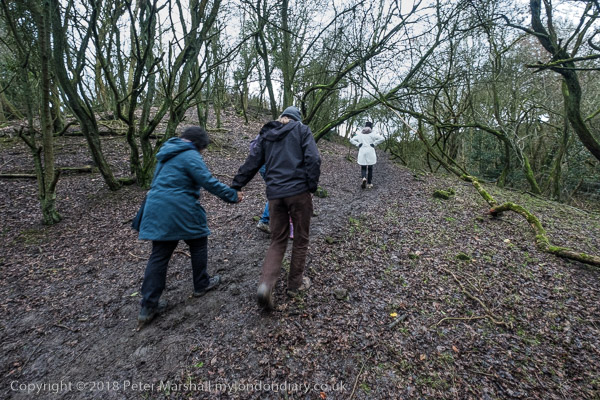
It was good to get out into the country, though it would have been better if it had been rather less muddy as we struggled to get up the steep footpath to the sycamore at the top of Oker Hill.
The hill, above the Derbyshire village of Oaker is said to have got its name from a Romans who had a lookout post on the top of what they called the hill of Occurus, though I’m rather doubtful of this derivation. Certainly the Romans were here, and are likely to have chosen the hill as a lookout, as it has wide views all around (though a little blocked now by trees and bushes0, but why should they call it Occurus, which doesn’t appear to be a common Roman name or Latin word.
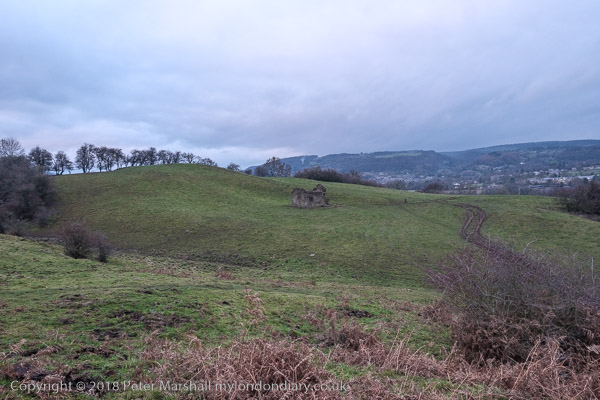
Derbyshire was important to the Romans as a source of lead, with many small mines in the area, possibly including some at Oaker, and certainly in other parts of the area around Matlock, though debates still rage about where the centre of the industry, the Roman town of Lutudarum actually was, though there is a strong case for Wirksworth. Derbyshire remained an importance source of lead until the end of the 18th century, but lead was still mined in the county well into the 20th century.
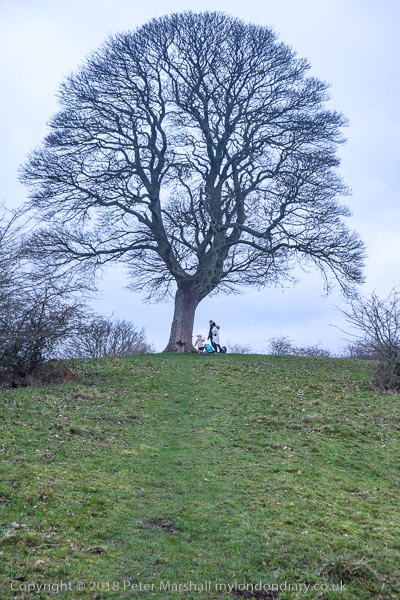
But Oker Hill became famous for another reason, a local legend of two brothers which became the subject of a sonnet written by Wordsworth in 1791 when he stayed the night in a nearby farmhouse. The sonnet tells of two – Will and Tom Shore – climbing to the top of the hill and each planting a tree, before parting to go their separate ways, never meeting again on this earth, but their trees entwining their arms.
Presumably there were still two trees in 1791, but now only one remains, and according to the local legend, the brothers quarelled and Tom left the area to seek his fortune abroad, but died in poverty. His tree too withered, while Will, who stayed at home, prospered, as did his tree.
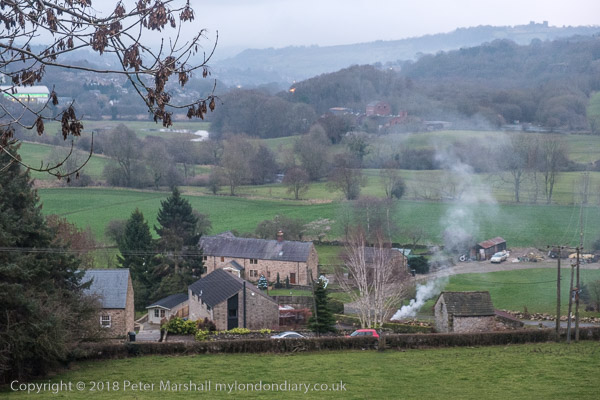
Now the only industry on Oker Hill is farming, though probably most of those who live in Oaker drive to nearby towns such as Matlock to work. We came down the hill by a slightly different route, hoping to avoid the worst of the mud, but found ourselves having to wade through deep water-filled tractor tracks, the water just briefly overtopping my boots as I hurried across.
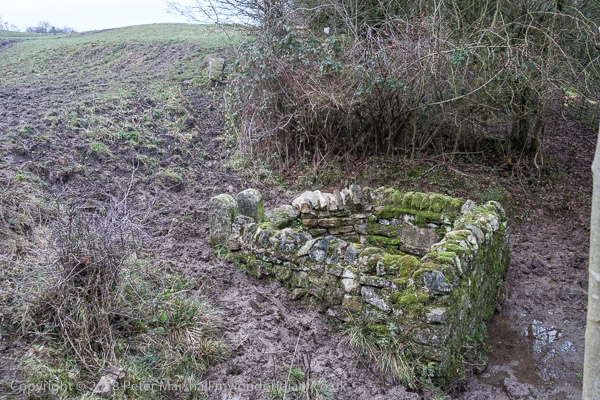
Close by was a reminder of how much life in this area has changed in the last hundred years or so, a small stone wall around Grace’s Well. It was a little tricky to photograph as my feet were sliding in the mud as I did so. The well was built just after 1900 for Grace, a member of the Greatorex family who still farm the area and some of whose grandchildren still live around here, and provided water for her family. Mains water only arrived here in the 1920s or 1930s. I thought about this as I washed the mud of my boots with several gallons of running water back in Matlock.
A few more pictures – and Wordsworth’s sonnet in full – on My London Diary at Matlock – Oker Hill
______________________________________________________
There are no adverts on this site and it receives no sponsorship, and I like to keep it that way. But it does take a considerable amount of my time and thought, and if you enjoy reading it, a small donation – perhaps the cost of a beer – would be appreciated.
My London Diary : London Photos : Hull : River Lea/Lee Valley : London’s Industrial Heritage
All photographs on this and my other sites, unless otherwise stated, are taken by and copyright of Peter Marshall, and are available for reproduction or can be bought as prints.
To order prints or reproduce images
________________________________________________________